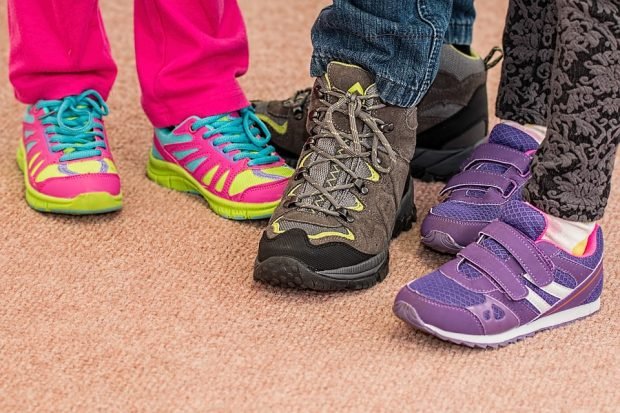Parents are familiar with the problem: children’s feet grow incredibly quickly and if you buy a pair of children’s shoes, you almost have to get the next one. Nevertheless, it is essential not to put children in shoes that are too small, because that small Feet and toes are sensitive – and the long-term damage to small children’s shoes usually has serious consequences.

How do I measure my child’s feet?
To measure the foot length correctly, first simply place your foot on a measuring tape or a ruler long enough. The child should stand and not sit. Because only when standing are the feet stressed in the same way as when walking. Read the measured length from the heel to Toe tip of the big toe. Important: If there are inequalities, note the length of the larger foot.

How do I find the right size?
A study on several thousand children’s feet showed that the Feet of 3-6 year old children grow an average of 1 mm per month. As a rule of thumb, children’s shoes should always be bought about a thumb’s width longer than the foot measures – for example 12-17 mm longer than the child’s foot length. A good shoe gives the foot stable support through the heel and the side guide, not through that "cramping" between toe and heel. Therefore add the thumb width mentioned to the measured value.
Use size charts for children’s shoes
The use of helps to determine the shoe size Children’s shoes size charts. You can find these here on the page.
You can also ask specialist staff to help you measure children’s feet. Numerous specialist shops use the so-called Width measurement systems (WMS). In addition to the length of the foot, this also measures the width. This method also includes a few millimeters of room for growth.
How often should the foot length be measured?
Since children’s feet grow very quickly, orthopedic surgeons recommend regular measurement of the foot in order to ensure that the shoes fit perfectly. For 1-2-year-old children, a measurement should be carried out at least every two months, for 3-4-year-olds every four months and for children between 4 and 6 years, two measurements per year are sufficient. reason.
More tips on buying children’s shoes
The Adult feet increase about 4% during the day. The toes and the footbed are extended by a few millimeters both in width and in length. There are no comparable data for children’s feet so far. However, experience shows that even small feet show little fluctuation in size during the day. It is therefore recommended to measure the foot and also to adjust the shoes while the second half of the day.
Before buying shoes, parents can buy one Cardboard template of the foot produce. To do this, the child’s foot is simply drawn on cardboard and one Length of about 12-17 mm added to the foot length. The cut-out template must be fully insertable into the shoe in the shoe store. The However, the size chart for children’s shoes always provides only a first guideline, Since children’s shoes from different brands can turn out slightly different – let your kids try on the shoes in any case!
RELATED ITEMS
-

Improperly bought children’s shoes: effects on the health of your feet – cleankids magazine
Between fifty and eighty percent of children in Germany walk in unsuitable shoes. Mostly the children’s shoes are too small and this can…
-

Buy cheap children’s shoes online!
Children’s shoes are such a thing! On the one hand, the quality is particularly important to us, after all, the kids run around with it all the time…
-

Buy children’s shoes online and cheap
Free delivery from just 29 euros. Real reviews from users. In cooperation with the best shops you can buy children’s shoes online with the right one…
-

Narrow children’s shoes, shoes for girls
12/19/2015 by H. Gustin Every child’s foot is unique. That is why Däumling wants to meet its individual needs perfectly. thanks to the…
